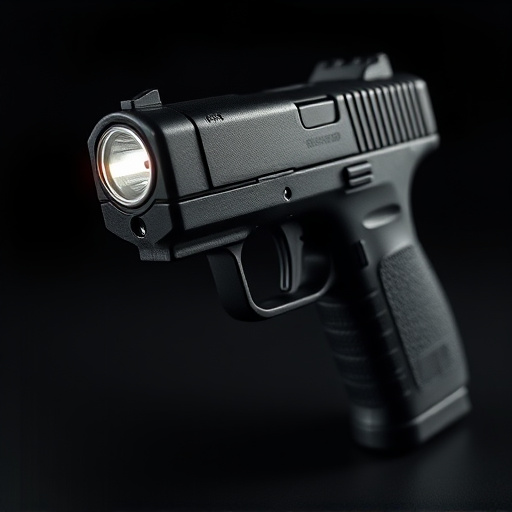Slider stun guns operate on precise electrical pulse frequencies, typically between 10,000-60,000 Hz, to deliver powerful yet safe shocks. Higher frequencies enhance intensity but increase noise and power consumption. Advanced models use intelligent circuits to adjust frequency based on target impedance, while battery life is crucial for consistent performance. Global guidelines set acceptable stun gun frequencies at 100,000-400,000 Hz to prevent injuries. Modern technology allows for customizable frequency levels, optimizing impact and efficiency in diverse scenarios, catering to law enforcement and self-defense needs with enhanced control and adaptability.
“Uncover the power behind slider stun guns as we explore the critical aspect of electrical pulse frequency. This comprehensive guide delves into the fundamentals, offering insights on how different pulse frequencies impact their performance. We examine the advanced technologies and safety regulations surrounding these devices, specifically focusing on slider stun guns. Understand the factors influencing pulse rates and discover how precise frequency control enhances their effectiveness, ensuring informed decisions in choosing the right stun gun.”
- Understanding Electrical Pulse Frequency: The Basics
- How Slider Stun Guns Utilize Pulse Frequency
- Factors Influencing Stun Gun Pulse Rate
- Safety Considerations and Regulations for Stun Gun Frequencies
- Advanced Technologies: Enhancing Stun Gun Effectiveness Through Frequency Control
Understanding Electrical Pulse Frequency: The Basics
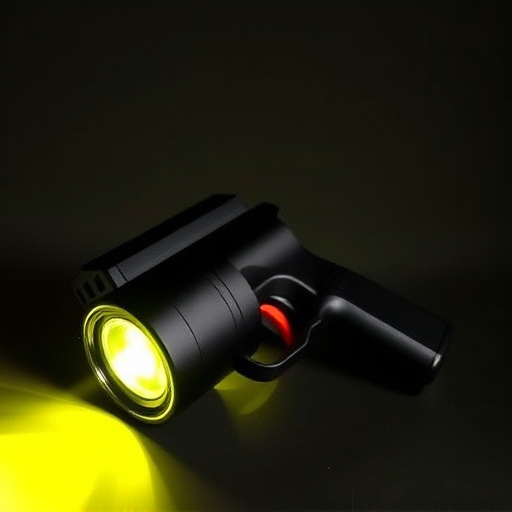
Electrical pulse frequency is a fundamental concept in understanding how stun guns work. A slider stun gun, for instance, delivers a high-voltage electrical discharge to incapacitate a target temporarily. The frequency refers to the number of electrical pulses emitted per second. Stun guns typically operate in the range of 10,000 to 60,000 Hertz (cycles per second). A higher pulse frequency generally corresponds to more powerful shocks, but it also increases the noise level and power consumption.
In a slider stun gun, the electrical circuit is designed to generate quick, intense pulses that disrupt muscle control in the body, causing temporary paralysis. The frequency of these pulses is crucial for ensuring both effectiveness and user safety. Too low a frequency might not be powerful enough, while too high can lead to excessive power drain and potential harm to the user if proper safety measures aren’t in place. Therefore, manufacturers carefully calibrate stun guns to deliver optimal shock levels through precise control of pulse frequency.
How Slider Stun Guns Utilize Pulse Frequency
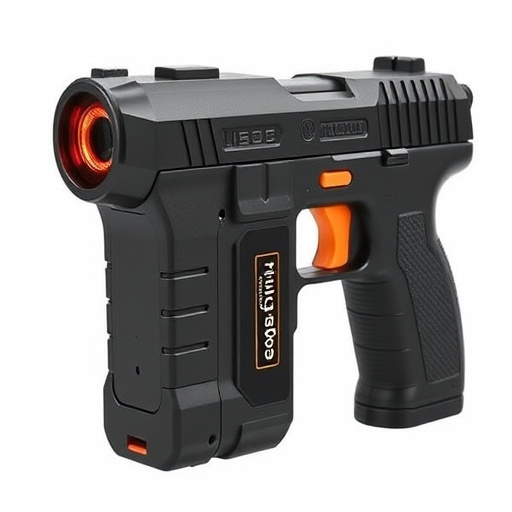
Slider stun guns are designed to deliver a powerful electric shock through a unique mechanism that relies heavily on pulse frequency. These devices operate by generating rapid electrical pulses, which are then converted into a high-voltage, low-current discharge. The slider mechanism allows for precise control of the pulse width and frequency, enabling the user to adjust the intensity of the stun. By varying these parameters, users can target different muscle groups, causing either temporary incapacitation or intense pain.
The pulse frequency in slider stun guns typically ranges from 100 to 300 pulses per second, ensuring a consistent and effective shock. This frequency is critical to the weapon’s effectiveness, as it allows for deep penetration of the electric current into the body, disrupting muscle function and sensory perception. The specific frequency also plays a role in minimizing the risk of electrical burns, making slider stun guns a safer alternative to traditional stun devices that use higher voltages but lower frequencies.
Factors Influencing Stun Gun Pulse Rate
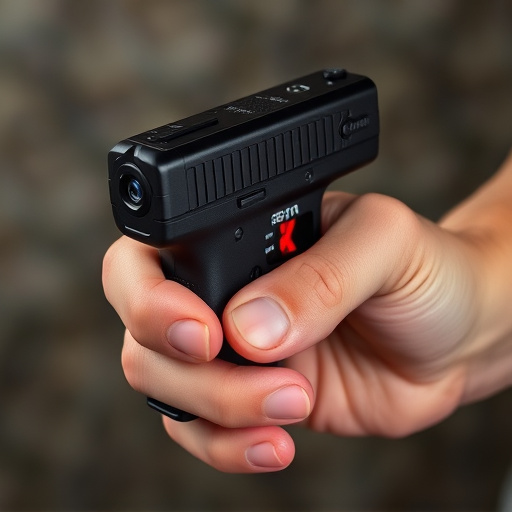
The pulse rate of a stun gun, particularly a slider stun gun, is influenced by several key factors. One of the primary determinants is the device’s design and technology. Advanced models often incorporate intelligent circuit boards that can adjust the electrical pulse frequency based on external conditions, ensuring optimal performance. For instance, some slider guns use microprocessors to monitor and adapt to the target’s impedance, delivering a more effective shock by varying the pulse width and intensity.
Another crucial factor is the battery life and condition. The power source plays a significant role in dictating how frequently the stun gun can deliver shocks. High-quality batteries with ample charge ensure consistent and rapid firing, while depleted or low-quality batteries may result in slower pulse rates due to power restrictions. Therefore, maintaining good battery hygiene is essential for optimal stun gun performance, especially when considering factors like temperature and age that can impact battery health.
Safety Considerations and Regulations for Stun Gun Frequencies
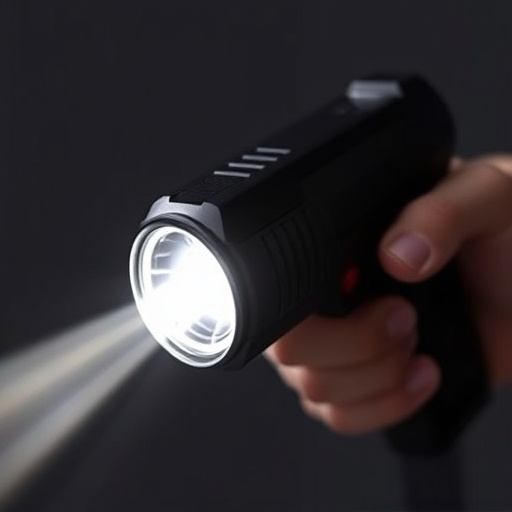
When considering the safety aspects and regulations surrounding stun guns, particularly slider stun guns, one key parameter to focus on is the electrical pulse frequency. The intensity and effectiveness of a stun gun are closely tied to the frequency at which it delivers shocks. However, this feature also demands careful attention due to potential risks involved. Authorities worldwide have implemented guidelines that dictate the acceptable ranges for stun gun frequencies, ensuring user safety and minimizing unintended harm.
These regulations not only protect users but also ensure the responsible use of these devices. For instance, many regions mandate that stun guns should operate within a specific frequency range, typically between 100,000 to 400,000 Hz, to avoid severe physical injuries. Slider stun guns, known for their customizable settings, must adhere to these standards, allowing users to adjust the frequency according to local laws and personal preference while maintaining safety as a top priority.
Advanced Technologies: Enhancing Stun Gun Effectiveness Through Frequency Control
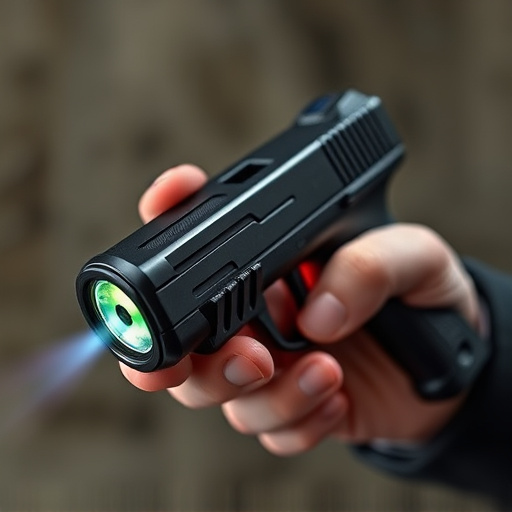
In today’s digital era, advanced technologies are revolutionizing the effectiveness of stun guns, with frequency control emerging as a game-changer. Stun guns, like slider stun guns, operate by delivering electrical pulses to incapacitate targets temporarily. By precisely controlling the pulse frequency, manufacturers can optimize the weapon’s impact while minimizing energy waste. This innovation ensures that each shock is potent and targeted, allowing users to maintain superior control in high-pressure situations.
Frequency manipulation enables stun gun designers to tailor the device’s performance to specific needs. For instance, higher frequencies can increase the intensity of the shock, making it more effective against larger or more robust targets. Conversely, lower frequencies can extend the stun gun’s battery life while still achieving sufficient immobilization. This level of customization not only enhances user safety but also ensures that law enforcement and self-defense professionals have a versatile tool capable of adapting to diverse scenarios.
Slider stun guns have revolutionized personal safety with their precise control over electrical pulse frequency. By understanding the basics of pulse frequency, leveraging advanced technologies, and considering safety regulations, users can maximize the effectiveness of these devices. Factors like power source, capacitor size, and desired shock impact influence the pulse rate, ensuring individuals have the appropriate tool for various situations. As technology advances, continuous innovation in stun gun frequency control promises enhanced safety and protection for years to come.
